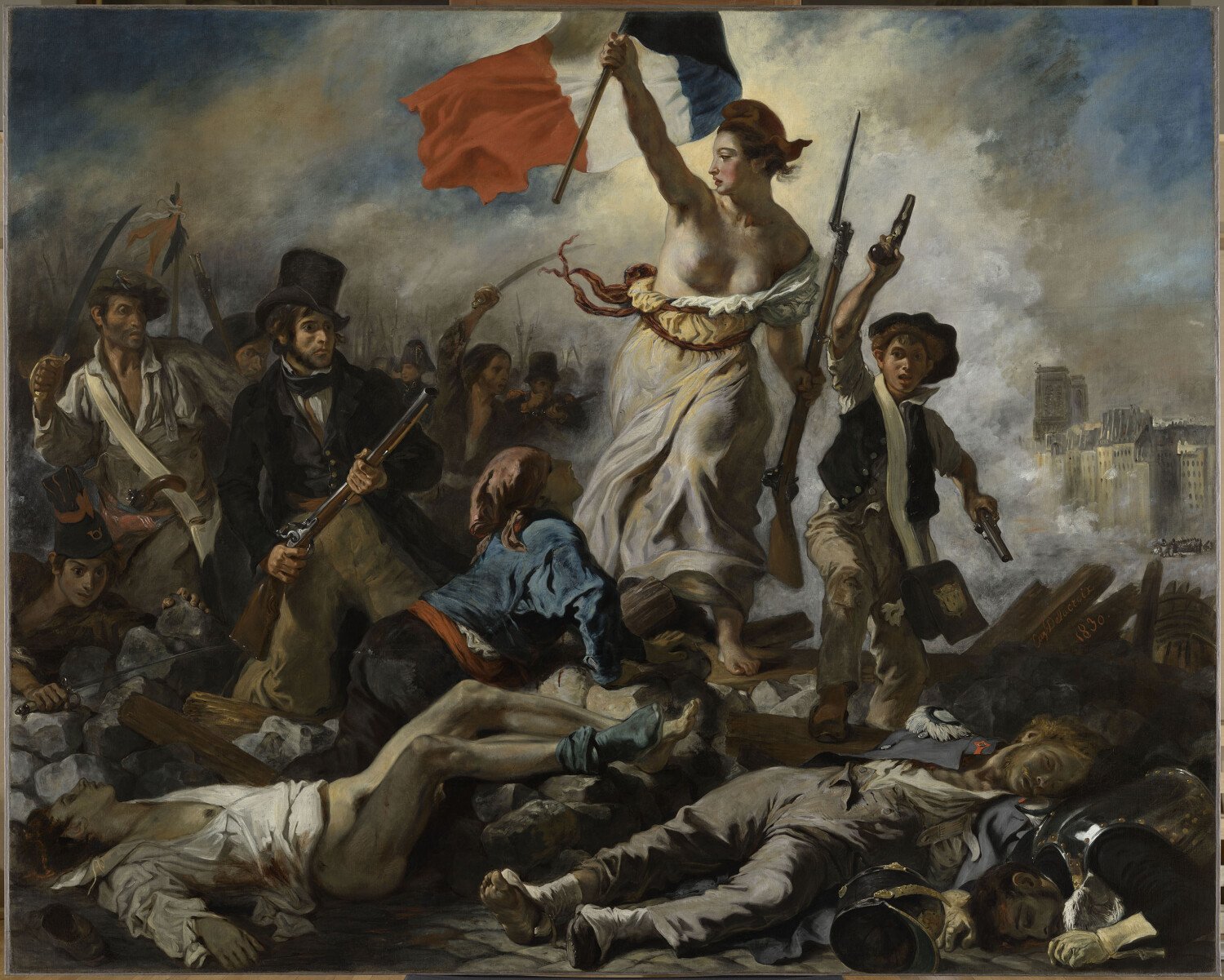
Eugène Delacroix’s Liberty Leading the People (1830) has been celebrated as an emblem of the French Republic for almost 200 years. The dynamic scene of Liberty leading revolutionaries into battle first entered the Louvre in 1874, following its purchase by the state a year after its creation.
However, its dramatic palette has yellowed and dimmed over time, leading the museum to undertake a major six-month restoration to remove eight layers of oxidized varnish. The project forms part of other recent restoration efforts to conserve works by Delacroix, including Women of Algiers in Their Apartment (1834) and The Massacre at Chios (1824).
With the project now complete, the painting has been returned to its former glory and rehung in the Salle Mollien, alongside other famed 19th-century works such as Théodore Géricault’s The Raft of the Medusa (1818–19).
According to Bénédicte Trémolières and Laurence Mugniot, who restored the painting, previous attempts at preservation had dramatically altered Delacroix’s subtle palette and flattened or obscured key compositional details.
For example, the central allegorical figure of Liberty—who is known in France as Marianne, the personification of liberté, égalité, fraternité—wears a tunic which was believed to be uniformly yellow. However, it is in fact light grey with hints of golden hues. A conservation effort in 1949 is believed to be responsible for deliberately recoloring the clothing.
Eugène Delacroix, Liberty Leading the People (1830), before restoration. © Grand Palais Rmn (Musée du Louvre) / Adrien Didierjean / Mathieu Rabeau.
A general cooling of the palette further emphasizes the tricolor flag she holds above her head, as well as its chromatic relationship to the smoke-filled sky and figures below. “We’re the first generation to rediscover the color,” Sébastien Allard, director of paintings at the Louvre, said in a statement to the Agence France-Presse.
Other discoveries include the fact that the pistol-wielding boy, nicknamed Gavroche, stands in front of Marianne, not to her side as previously assumed. A less prominent detail was also uncovered in the form of a worn boot, depicted in the bottom left-hand corner of the canvas. It could well belong to the fallen soldier that lies beneath Liberty’s feet.
Delacroix’s vision of the July Revolution that toppled King Charles X is arguably the most popular painting in the museum’s holding after the Mona Lisa. As an enduring image of French national identity, it is no wonder it has gone back on display just in time for the Paris Olympics, which kick off in July.
As the world’s most-visited museum, with 8.9 million people recorded in 2023, the Louvre can expect even greater numbers this summer. It is also catering specifically to Olympics tourists with an exhibition dedicated to the history of the games, and special events including chances to run, dance, and do yoga in the galleries.
The museum made recent headlines for positing a major renovation to give the Mona Lisa its own room, to cope with the ever-increasing crowds. It also announced a hike in ticket prices by 29 percent earlier this year, which is in-keeping with general price increases across the capital, as it prepares for greater tourism generated by the Olympics.